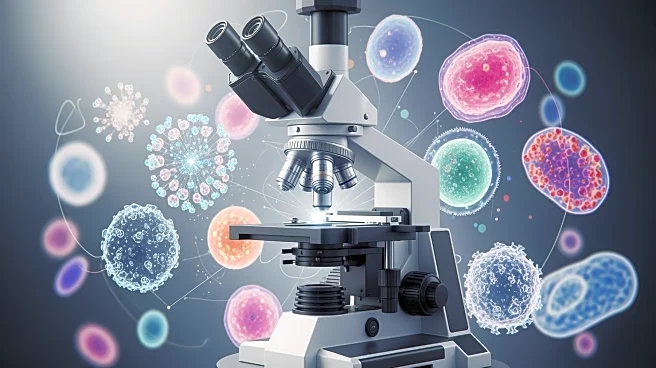What's Happening?
Recent advancements in spatial biology have introduced the STORIES technique, which leverages spatial transcriptomics to study cell fate landscapes. This method utilizes optimal transport to integrate
spatial data with gene expression, allowing for a detailed analysis of cell trajectories over time. The STORIES model is particularly tailored for single-cell resolution technologies like Stereo-seq and Visium HD, providing insights into dynamic biological processes such as development and disease onset. By applying deconvolution techniques, STORIES can also be adapted for lower resolution data, enhancing its applicability across various datasets.
Why It's Important?
The development of STORIES represents a significant leap in the field of spatial biology, offering a new tool for researchers to understand complex biological processes at a cellular level. This technique could revolutionize how scientists study developmental biology and disease progression, potentially leading to breakthroughs in regenerative medicine and cancer research. By providing a more nuanced understanding of cell behavior in its spatial context, STORIES could inform the development of targeted therapies and improve the precision of medical interventions.
What's Next?
As the STORIES technique gains traction, it is expected that the number of spatiotemporal atlases at single-cell resolution will increase. This expansion will likely drive further research into the applications of spatial transcriptomics in various fields, including neuroscience and immunology. Researchers may also explore the integration of STORIES with other omics technologies to enhance its analytical capabilities. The continued development and refinement of this technique could lead to its adoption in clinical settings, where it could aid in the diagnosis and treatment of complex diseases.
Beyond the Headlines
The ethical implications of using advanced spatial biology techniques like STORIES should be considered, particularly in terms of data privacy and the potential for misuse in genetic research. Additionally, the legal framework surrounding the use of such technologies in clinical settings will need to be addressed to ensure patient safety and compliance with regulatory standards.











